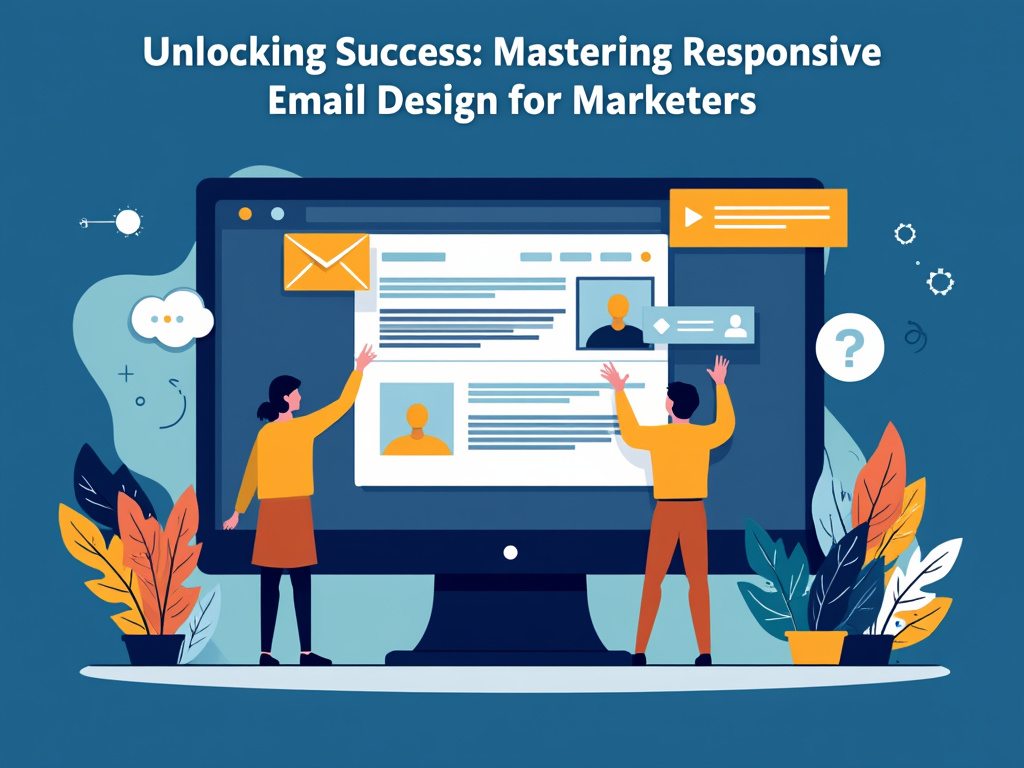Responsive Email Design for Marketers

Creating an engaging digital experience for your customers is paramount, especially in the competitive world of e-commerce. One of the most effective tools at your disposal is email marketing. It’s not just about sending out promotions; it’s about crafting an experience that resonates with your audience. One crucial aspect of this is responsive email design. As a marketer, mastering this skill will unlock numerous possibilities for your e-store, ensuring that your messages look stunning on any device.
The Importance of Responsive Email Design
In a landscape where users access their emails on various devices—desktops, tablets, and smartphones—responsive email design has become indispensable. Research suggests that nearly half of all emails are opened on mobile devices. If your emails aren’t optimized for those screens, you risk losing not only engagement but also potential sales.
Responsive design ensures that your email adapts smoothly to the screen size, allowing for a seamless experience. When emails are easy to read and navigate, customers are more likely to engage with your content, whether they view it while commuting or at home.
Key Principles of Responsive Email Design
To make the most out of your email marketing efforts, consider these essential principles of responsive design:
- Flexible Layouts: Use fluid grids that can adapt to various screen sizes. Start with a single column layout which expands as the screen size increases.
- Responsive Images: Images should scale according to the device. Tools like Incomaker allow you to insert images that can adjust their size dynamically, making sure they don’t break the layout.
- Readable Fonts: Ensure that your font sizes are legible on smaller screens. A good rule of thumb is to use a minimum font size of 14 px for body text.
- Touch-Friendly Buttons: Make sure buttons are large enough to be easily tapped on a touchscreen. This enhances the user experience and can lead to higher click-through rates.
- Minimalist Design: Avoid clutter. A clean layout with limited elements will help guide your reader’s focus to key messages and calls to action.
Crafting Engaging Content
While responsive design is crucial, the content of your emails must also resonate. Consider segmenting your email list and tailoring your messages based on customer behavior—things like past purchases or browsing activity. This personalized touch can significantly increase engagement rates.
When crafting content, keep the following tips in mind:
- Attention-Grabbing Subject Lines: Your subject line determines whether or not your email gets opened. Make it catchy but relevant to your content.
- Compelling Preheaders: Use this to complement your subject line and entice readers further. Every character counts!
- Clear Call to Action (CTA): Make it easy for customers to know what to do next. Use action-oriented language and ensure your CTA stands out.
- Visual Appeal: Integrate your brand’s colors and designs. This not only makes the email visually appealing but also reinforces brand recognition.
Testing and Analytics
Remember that not all devices render emails the same way. Testing your emails on various platforms (Gmail, Outlook, mobile browsers, etc.) is essential to catch and fix potential issues before they reach your audience. Many email platforms, including Incomaker, offer testing features that allow you to preview how your email will appear across different devices and clients.
Once you’ve sent your campaigns, continually analyze performance metrics. Look at open rates, click-through rates, and conversion rates. These insights will guide you in adjusting your strategy for future emails, helping you refine both your content and your design.
The Evolution of Email Automation
As you refine your email design and content strategy, don’t overlook the power of email automation. Marketing automation platforms, such as Incomaker, facilitate the creation of personalized customer journeys based on specific triggers. This means you can send timely offers, re-engagement emails, or reminders without the manual workload. Automating your emails allows for a level of personalization at scale, a critical aspect of modern email marketing that your e-store can benefit from profoundly.
Imagine sending a targeted welcome email to new subscribers with tailored recommendations based on their browsing history, or a follow-up message after a customer makes a purchase, encouraging them to review their product. With automation, these workflows can be smooth and seamless, creating a memorable brand experience.
As you delve deeper into the nuances of responsive email design and marketing automation, don’t forget that it’s all about creating meaningful connections with your audience. Embrace these strategies, leverage the right tools, and watch your engagement soar. Your e-store isn’t just a business; it’s a developing relationship with your customers that you can cultivate through thoughtful and beautiful email marketing.



